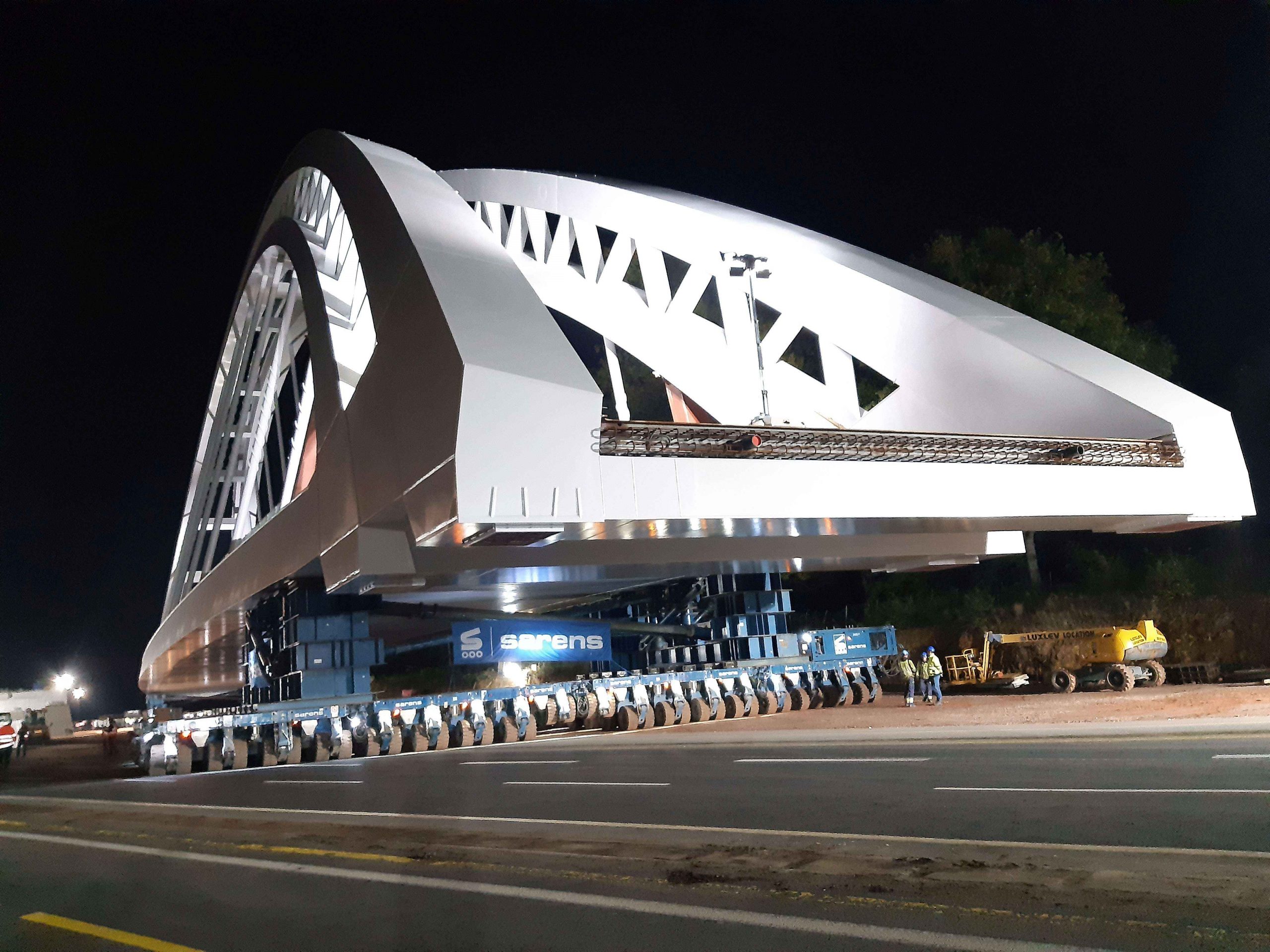The Luxembourg to Bettembourg Railway Project, which will link Luxembourg and Bettenbourg, close to the German border and approximately 7 km long, will make a decisive contribution to decongesting this basic infrastructure for the country’s transport and thus will reduce the delays accumulated daily by the more than 200,000 citizens who cross the border to France every day.
Intersections
Three major hydraulic and intersection structures will be included as part of this major project. The first of these, called OA14, is located at the junction of the A3 motorway without any intermediate support south of the town of Howald, while the second (OA05 and OA06), also known as the “flyover”, is located at the intersection with the existing northern railway line in Bettembourg.
Also read Contract awarded for Lot 4 of the Cluj-Napoca to Episcopia Bihor railway in Romania
In total, five pack & jack operations were required to bring the bridge to the final height, so that installation of the bridge could be done using SPMT’s for the final placement of the bridge. One of the main challenges in this respect was to maximise the operability of the maneuver, as it was necessary to interrupt traffic on the A3 motorway during the night of 7th to 8th of October in order to carry it out. From that moment on, the Sarens technical team mobilised for this job positioned the entire bridge structure longitudinally for 150 metres and other 40 metres lengthwise until reaching its final location. In total, the entire operation was completed in approximately three and a half hours, which reduced the time needed to shut down traffic on the motorway.
The Luxembourg to Bettembourg Railway Project is part of the strategy of the Luxembourg Ministry of Mobility and CFL to drive a continuous improvement of public transport in the country. Since the first studies in 2015, both parties have aimed to increase the number of seats available on trains by up to 46% by 2026, which requires increasing the frequency of trains and the reliability of arrival times. In addition to the construction of the two new tracks on this route, the Luxembourg station is being adapted to accommodate the new rail traffic, which is scheduled to be completed in 2026.
